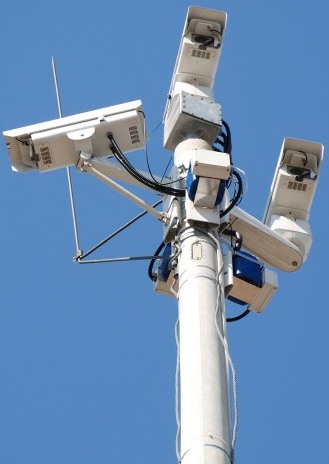By Steve Biko Abuya
Published June 20, 2014
 “Very soon, there will be millions of eyes watching you and you will have nowhere to run to,” Kenyan President Uhuru Kenyatta says to criminals in the 2014 campaign promotion for the installation of closed circuit television (CCTV) surveillance cameras in Nairobi and Mombasa cities.
“Very soon, there will be millions of eyes watching you and you will have nowhere to run to,” Kenyan President Uhuru Kenyatta says to criminals in the 2014 campaign promotion for the installation of closed circuit television (CCTV) surveillance cameras in Nairobi and Mombasa cities.
Yes, the country may be in dire need of the US$176 million security cameras contract awarded to Safaricom mobile phone service provider to boost security given the rising number of cases of terror attack in the two cities. It may even be important to advertise for more security tenders and vigilance among the citizens.
RELATED: British Airways Pulls Out of Tanzania
However the effectiveness of CCTV cameras is largely dependent upon how the surveillance system itself is set up, monitored and responded to by security agents.
 Though Kenya has a poor public-policing ratio of 1:1000 that is well below UN’s recommendation of a 1:450, the number of Police patrol cars should be increased and be well maintained in order to cover wide geographical locations even as the government considers recruiting and training more officers.
Though Kenya has a poor public-policing ratio of 1:1000 that is well below UN’s recommendation of a 1:450, the number of Police patrol cars should be increased and be well maintained in order to cover wide geographical locations even as the government considers recruiting and training more officers.
Police officers should be adequately armed, say with state of the art weaponry, to combat high level crime. However, it would be a child’s play to have a concentration of high security detail in the major towns and cities while the Kenyan borders remain porous facilitating smuggling of weapons into the country. Even if the CCTV surveillance cameras were functioning 24/7, the poor manning of the borders and the corruption riddling the country’s Immigration and Security departments would water down their effectiveness.
Yes, Kenyan cities need surveillance cameras; but what of the security of the rest of the country?
Diligent service by the police and other security personnel would be pivotal in ensuring a safe country, which would in turn be a recipe for attracting investors and tourists who would boost the economy of Kenya.





Have you ever thought about publishing an ebook or guest authoring on other sites?
I have a blog centered on the same ideas you discuss
and would really like to have you share some stories/information. I
know my visitors would value your work. If you’re even remotely interested,
feel free to send me an email.
Great article.. I agree with the above poster. It’s all about a combination of different ingredients that create the perfect strategy. We agree and support this page details.
Who we are?
Electronic Security Systems Supplier in Chennai.
Best Price CCTV Cameras, DVR’s, Fire Alarm, Burglar Alarm, Biometric and Home/Office Automation Systems with 1 Year Warranty.
Great article.. I agree with the above poster. It’s all about a combination of different ingredients that create the perfect strategy. We agree and support this page details.